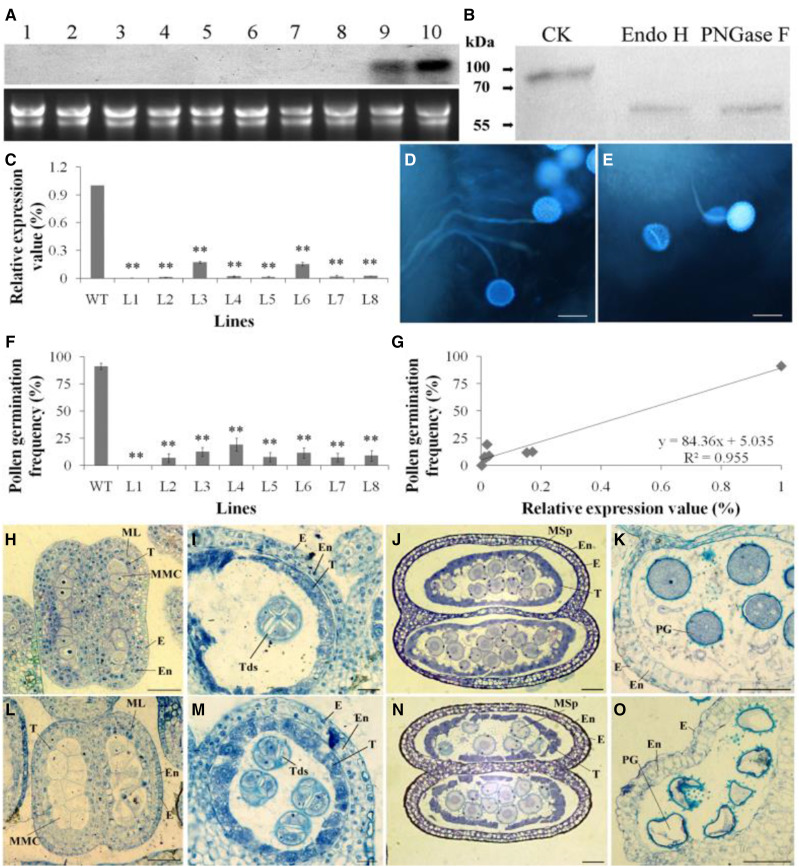Figure 1.
PSP231 deficiency impairs pollen development and germination. A, RNA gel blot analysis of PSP231 expression (top) in cotton cotyledons (lane 1), leaves (lane 2), roots (lane 3), hypocotyls (lane 4), petals (lane 5), fibers (lane 6), ovules (lane 7), 15-d-old anthers (lane 8), 20-d-old anthers (land 9), and 25-d-old anthers (lane 10), and loading of RNA samples (bottom). B, Assay of PSP231 glycosylation. Cotton anther proteins were treated with buffer as control (CK), Endo H, and PNGase F, respectively. Protein gel blot was performed to determine the migration of PSP231 using PSP231 antibody. C, RT-qPCR analysis of PSP231 expression in anthers of RNAi cotton lines (L1–L8). Expression level of PSP231 in the wild type (WT) is set to 1. Data are means ± sd for three replicates. Dunnett's t test demonstrated that there were very significant differences (**P < 0.01) in gene expression level between the PSP231 RNAi plants and the wild type. D and E, In situ pollen germination of wild-type (D) and PSP231 RNAi cotton (E). Scale bars = 100 μm. F, Percentage of in vivo pollen germination of wild-type and PSP231 RNAi cotton. More than 200 pollen grains for each PSP231 RNAi line or the wild type were examined for in vivo pollen germination (see “Materials and Methods”). Data are means ± sd of three replicates. Dunnett's t test demonstrated that there was a very significant difference in the percentage of germinated pollen grains between the PSP231 RNAi plants and the wild type (**P < 0.01). G, Correlation between pollen germination and relative expression value of PSP231 for the RNAi plants. H to O, Comparative analysis of the histological features of anther development in 9-d-old (H), 11-d-old (I), 12-d-old (J), and 20-d-old (K) wild-type anther and 9-d-old (L), 11-d-old (M), 12-d-old (N), and 20-d-old PSP231 RNAi anther (O). Images show cross sections through a locule of the anther. Scale bars = 25 μm (H, I, J, L, M, and N) and 50 μm (K and O). E, Epidermis; En, endothecium; ML, middle layer; MMC, microspore mother cell; MSp, microspore; T, tapetum; Tds, tetrad; PG, pollen grain; Fb, fibrous bands.

